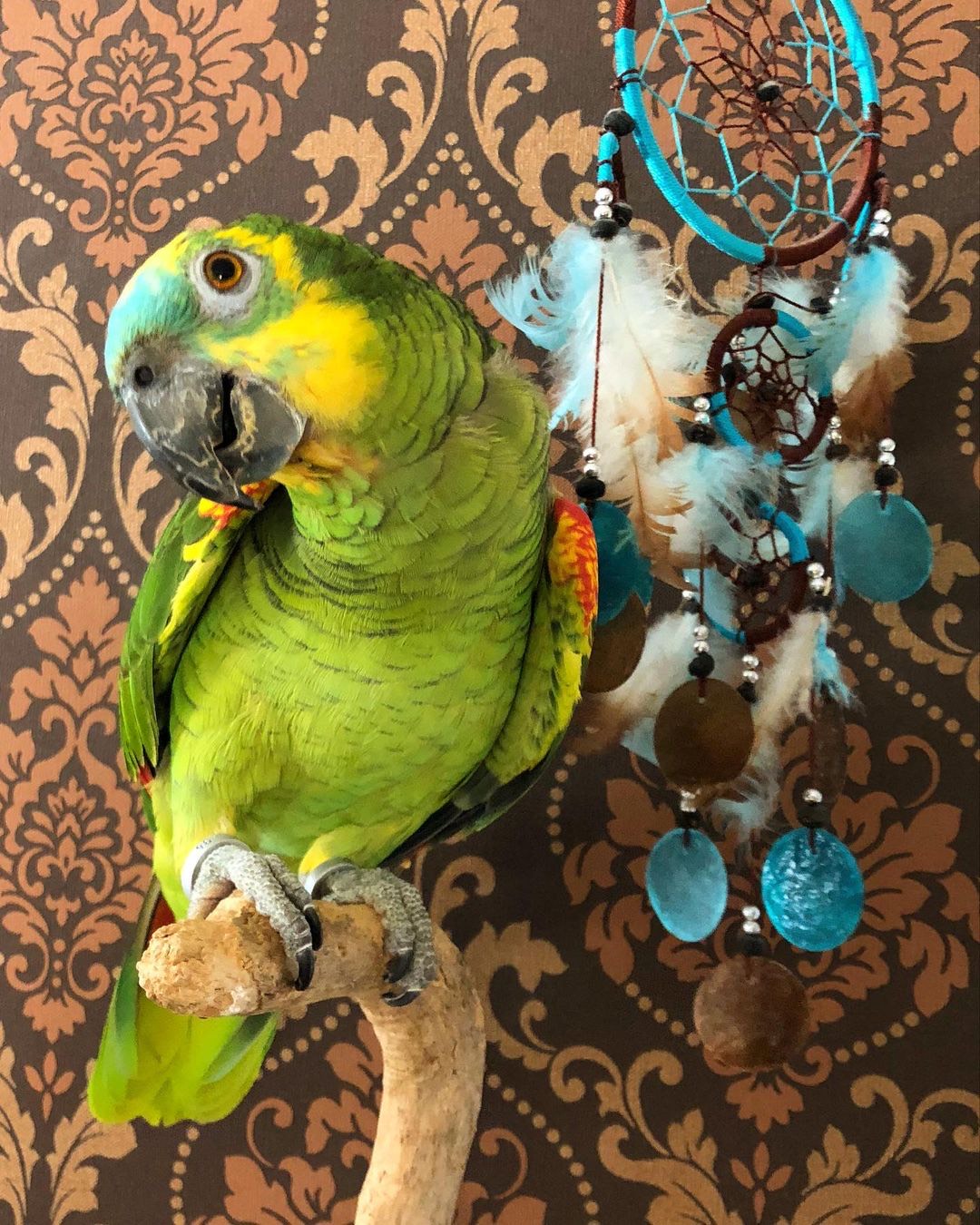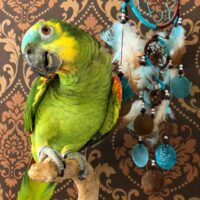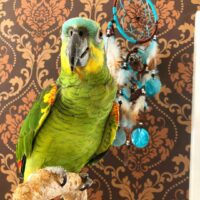Blue Fronted Amazon Parrot for Sale
The medium-sized Blue-Fronted Amazon parrot for sale has a green body and a yellow face. Southwestern Brazil, Paraguay, Bolivia, and northern Argentina are all home to these avian. One of the most talkative pets is the turquoise-fronted amazon bird. Along with their outgoing personalities, each bird’s distinctive plumage patterns match its dazzling color. The Blue-Fronted Amazon Parrot, like many birds, develops a stronger attachment with one person than the rest of the family. But if you teach them properly, unlike most other parrots each moment spend with the bird is going to be a remarkable one. They usually are not hostile towards the other members of the family.
All Blue fronted amazon parrots for sale is covered with a 60-days health guarantee by the Bird Breeder. If you have questions about what is covered, please view the Law associated with your state.
Within 60 days of purchasing your new parrot, you must take him/her to a licensed veterinarian for an examination. If the veterinarian determines, within 60 days of purchase, that the bird is clinically ill or will die from an injury sustained or illness likely to have been contracted on or before the date of sale and delivery, you have the following options:
- Return the bird for a complete refund.
- Return the bird for a replacement Bird of equal value.
- Retain the bird and receive reimbursement for reasonable veterinary fees, not exceeding the purchase price.
Blue Fronted Amazon Parrot Personality
Blue-fronted Amazons have a talent for performing. They enjoy spending time with their human guardian and will act up for additional care. In general, they are very gentle and affectionate animals. They also enjoy when they are the main area of attention and will do stunts and tricks to keep their guardian focus on them. Owners generally characterize this genus as being highly outgoing, active, and friendly. This parrot can keep itself busy for a long period and is typically quieter than most other Amazons. But it doesn’t imply it needs less care. If this bird feels abandoned or ignored, the turquoise-fronted amazon will let you realize strongly that it desires to be included in the fun. They are skilled singers and talkers who frequently and loudly vocalize.
The blue fronted amazon bird needs human companion but may also happily play for extended periods of time. Pets need a significant number of play toys, perches, and space to climb. correlating to the spring, which is the breeding season, where most males, can be hostile.
Caring and Feeding
The more you allow this particular bird to engage in challenging activities in the house, they become more happy and develop certain personal traits. The Blue fronted amazon bird is highly clever and gregarious, and they require regular human connection. The Blue-Fronted Amazon Parrot is simpler to care for unlike many birds, despite the fact that all birds take a lot of effort and care. We advise a cage structure that is at least 3 feet in length, 2 feet wide, and 3 feet in height. Since they enjoy spending the day with their guardians, you should place their cage in a busy section of the house.
A minimum of 3 to 4 hours each day ought to be allotted for the blue-fronted to spend out of its cage. It can play, spread his feathers, and become a member of the family through this exercise. Amazon parrot keepers should supply their birds with a variety of chew toys so they can replace any that get too old because these parrots like to climb and chew. Make sure your bird has enough toys to keep it occupied, if you are not home. A particular favorite of the blue-fronted Amazon is bath time. Give it access to a dish of water so it can play as much as it wants.
Blue-fronted Amazons graze on fresh fruits, berries, leaf buds, blooms, seeds, and nuts in their natural habitat. They supposedly consume some proteins, too. Blue-fronted Amazons, like all other parrots, require a diversified diet that closely resembles their native diet.
Breeding
In tree holes, the blue-fronted amazon bird builds its nests. The white, oval eggs have a size from about 38 mm by 30 mm. A clutch often has three to five people. Roughly 60 days after hatching, the chicks depart the nest after the female has incubated the eggs for about 27 days.









Reviews
There are no reviews yet.